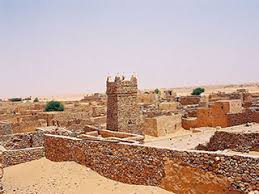Five new Mauritanian archaeological sites have been added to the heritage list of the Islamic Educational, Scientific and Cultural Organization (ISESCO), APA learned Tuesday from the Mauritanian Ministry of Culture.
These sites, the best known of which are those of Azougui, Aoudaghost and Koumbi Saleh, were inscribed at the said meeting of the ISESCO Islamic World Heritage Commission on Monday in Rabat, the same source said.
Located in the Adrar region, some 500 kilometers north of Nouakchott, the ancient city of Azougui was founded by the Almoravid ruler, Aboubakr Ibn Amer in the 10th century. It is materialized today by the mausoleum of Imam Al-Hadrami, author of the famous book entitled: “Al-ichara vi tadbiril imara.”
As for Aoudaghost (more than 1,200 kilometers southeast of Nouakchott), it was founded around the 5th century and became, in the Middle Ages, an important commercial center for the Berbers living on the outskirts of the Ghana Empire. This kingdom made it its capital after having conquered it in 990.
As for Koumbi Saleh (about 1,200 kilometers south-east of Nouakchott), it was only located in 1913 following archaeological excavations. It was considered the political capital of the Ghana Empire from the 4th century and served as a deposit of salt and gold, in connection with North Africa. In the eleventh century, its population was close to 30,000 inhabitants.
The other two sites are two ksours (fortified villages) in the cities of Atar (440 kilometers north of Nouakchott) and Tidjikja (500 kilometers east of Nouakchott).
MM/ard/cat/fss/abj/APA


